UN has a positive spin on the agreement, which includes other elements besides straightforward climate:
Didn’t mention their goal going into COP29 was a cool $1.3 Trillion instead of the $300 Billion.
A video is more than a thousand words:
UN has a positive spin on the agreement, which includes other elements besides straightforward climate:
Didn’t mention their goal going into COP29 was a cool $1.3 Trillion instead of the $300 Billion.
A video is more than a thousand words:
The root of the problem in India is they allow their farmers to burn the leftover crops and the wind blows the smoke into the city where it stays a while because geography. It’s not caused by climate change (nor is this particular annual event blamed on contributing to climate change as far as I can tell).
The idea is to explore the concept that alternate solutions could exist. These are likely just concepts that can be tested in a controlled environment.
Main ideas is to:
The CA fires really suck and I hope no one here was badly impacted. I know some who were and I’m hoping for the best for them.
But this was a local leadership failure in that they didn’t allow controlled burns during the off (non-windy) season or brush clearing in a highly flammable area.
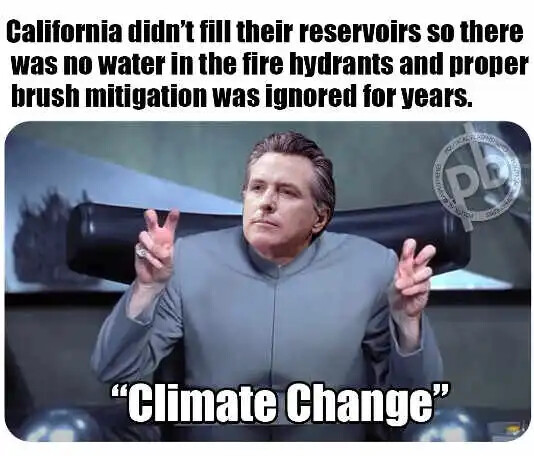
 The Babylon Bee
The Babylon Bee
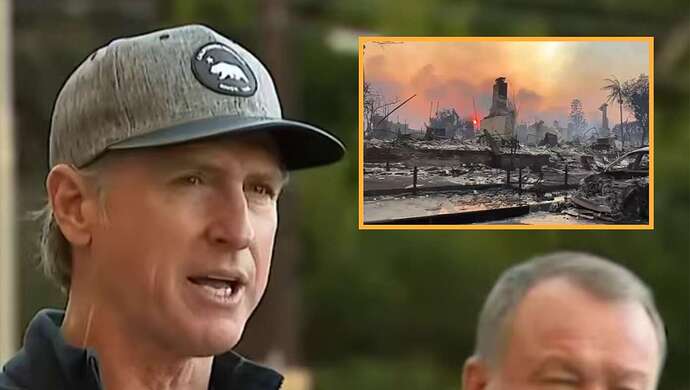
SACRAMENTO, CA — As wildfires continued to spread destruction across large swathes of California, Governor Gavin Newsom reassured victims of the fires that he'll be more prepared next time now that he knows water is useful in fighting fires.

Seems like a lot of BS being spread about the water in the hydrants. The very high demand caused a drop in pressure at some higher elevation streets and they had to use tankers that could refill a few blocks downhill. I have yet to see any facts that this was due to some kind of mismanagement. At this point I really doubt that the reservoirs had anything to do with it at all. Just sounds like people drawing conclusions from unrelated events to artificially create anger and clickbait.
I have yet to see any facts that this was due to some kind of mismanagement.
The LA Times is reporting that a large reservoir needed for firefighting has been “under repair” since February and was empty when the fires started. This is while Los Angeles has been under drought conditions since last year. The Democrat controlled state government is investigating.
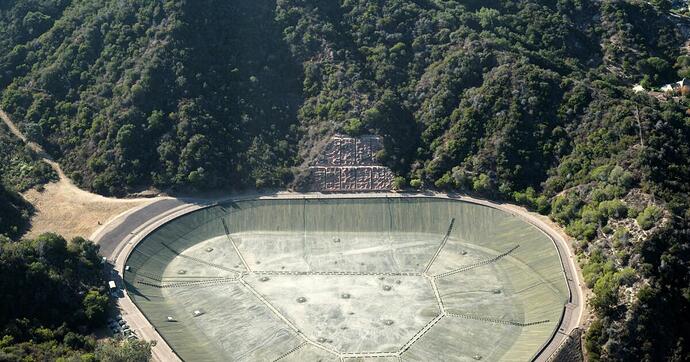
A reservoir in the Palisades that holds 117 million gallons of water was offline this month for previously scheduled maintenance.
A large reservoir in Pacific Palisades that is part of the Los Angeles water supply system was out of commission when a ferocious wildfire destroyed thousands of homes and other structures nearby, the Los Angeles Times found.
Officials said that the Santa Ynez Reservoir had been closed since about February for repairs to its cover, leaving a 117-million-gallon water storage complex empty in the heart of the Palisades for nearly a year.
The revelation comes amid growing questions about why firefighters ran out of water while battling the blaze, which ignited Tuesday during catastrophically high winds. The Times reported early Wednesday that numerous fire hydrants in higher-elevation streets of the Palisades went dry, leaving crews struggling with low water pressure as they combated the flames.
A reservoir closed for repairs does not equal “California didn’t fill their reservoirs so there was no water in the fire hydrants” or “Refused to fill reservoirs, to save minnows”, which are the BS quotes from the above post. It also doesn’t equal mismanagement, at least until the investigation proves otherwise.
Also it’s kind of moot that they couldn’t get water at higher elevations, because the fire burnt everything down to the ocean. People are grasping at straws here just to find someone to blame (or, more likely, push their own political agenda).
mismanagement
 City Journal
City Journal
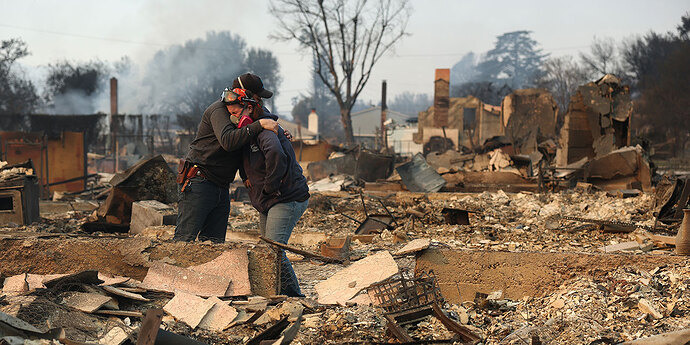
Decades of fire suppression policies have left forests dangerously dense and overgrown.
Est. reading time: 5 minutes
we know what works. Proactive forest-restoration efforts, such as mechanical thinning and prescribed burning, can significantly reduce the dangerous fuel loads that have turned forests and surrounding landscapes into tinderboxes. A growing body of evidence substantiates how these activities lower the risks of extreme wildfires and enhance forest resilience. Yet the pace and scale of restoration work remains woefully inadequate, hampered by a thicket of regulatory and bureaucratic barriers.
The problem is particularly acute in California, where state policies have hindered forest-restoration efforts… That process often involves years of analysis, public comment, and litigation before projects can even begin.
A recent analysis by my colleagues at the Property and Environment Research Center underscores just how cumbersome NEPA-related delays can be for the projects most needed to reduce fire risks. On average, it takes 3.6 years to begin a mechanical thinning project and 4.7 years to implement a prescribed burn after the U.S. Forest Service initiates the environmental review process. For large projects requiring environmental impact statements, the timeline stretches even longer, averaging 5.3 years for mechanical treatments and 7.2 years for prescribed burns.
So back in 2020 when the last bad fires suggested a more proactive approach to controlled burns and such, it’s been 4-5 years and they haven’t managed to get thru the CA bureaucracy to actually do anything. But in LA, they blew billions of their city budget on sweetheart union contracts, probably as payback for electing the far left major, and then she had to cut city services and choose to cut fire the 2nd biggest after public sanitation (who needs either of those?).
 City Journal
City Journal
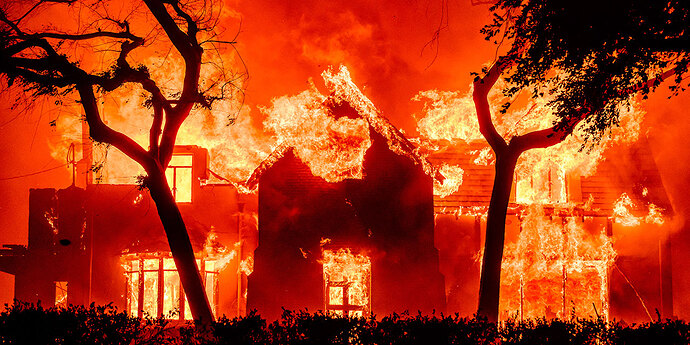
The city slashed fire and other basic services after she awarded fat contracts to government workers.
Est. reading time: 4 minutes
Mayor Karen Bass’s budget cuts to the city’s fire department, enacted just months ago amid warnings about the city’s deteriorating finances, stand out as a striking example of misplaced priorities. The cuts stemmed from a budget crisis triggered by her administration’s decision to reward city employees with rich contracts and benefits—even as it dismissed worries that the reductions would hurt services. “Predictions that city services will be impossible to deliver,” deputy mayor Zach Seidl told the press, “are simply false.”
Bass cut the city’s budget to $12.9 billion, down from $13.1 billion the previous year. This involved making reductions in some 20 areas, including a cut of $17.6 million in the fire department—the steepest decline in any area except street services, where Bass reduced spending by $21 million.
“The city is living beyond its means,” the editorial board of the Los Angeles Times notedat the time, adding that the problem was “self-inflicted.”
Lest you think that $17m cut wasn’t enough, Mayor Bass was in the process of cutting another $50m from the fire department to give to the homelessness industry.
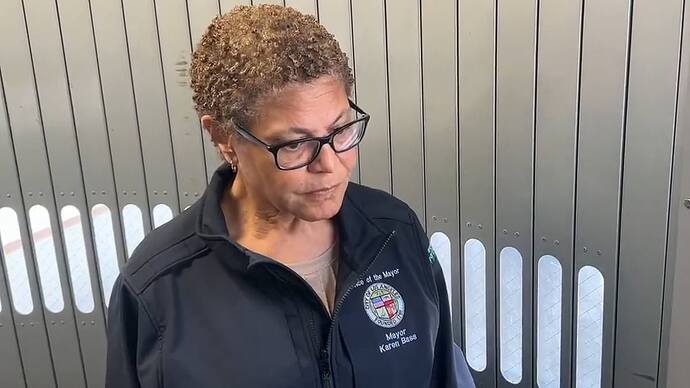
A leaked memo sent to Los Angeles fire departments revealed Mayor Karen Bass demanded an extra $49M in budget cuts on top of the $17.6million already cut a week before fires.
Los Angeles Mayor Karen Bass demanded her Fire Department make an extra $49million of budget cuts last week, a leaked memo revealed. This cut is already on top of $17.6million of cuts in her latest budget.
The extra cuts, requested just days before fires broke out and devastated swathes of Los Angeles, would have shut down 16 fire stations and crippled the department’s ability to respond to emergencies, sources said.
The memo is dated January 6, only a day before the devastating Palisades Fire started.
One day before the fire she was trying to cut $50m and close a bunch of fire stations. You can’t make this stuff up.
One day before the fire she was trying to cut $50m and close a bunch of fire stations. You can’t make this stuff up.
My 8-ball says Mayor Bass will resign in the next few weeks.
I don’t know about the first half of your response regarding any NEPA-related delays so I won’t comment on that.
One day before the fire she was trying to cut $50m and close a bunch of fire stations. You can’t make this stuff up.
None of your quotes mentioned the fire department’s total budget or the percentage that the cut represents, so I googled it and it’s about 2%. It’s not even worth talking about. A bunch of hot air from hot air media. There’s probably a bigger problem in how the existing budget is used because a few firefighters collect too much money by cheating the system with overtime (during the regular no-big-active-fires season).
Also cutting a department’s budget is not mismanagement. I would think conservatives would only be too happy about budget cuts, so the fact that y’all are railing against it is astonishing.
fire department’s total budget or the percentage that the cut represents, so I googled it and it’s about 2%.
Right, it was cut 2% recently ($17m) and she was trying to cut another 6% more ($49m). I don’t know whether it was big enough of a budget before or what, but obviously they weren’t able to do their job controlling the fire. Sounds like they have more structural issues than money ones, like most of CA.
Newsom cut some $100m from fire control efforts at a state level for this year.
 New York Post – 11 Jan 25
New York Post – 11 Jan 25
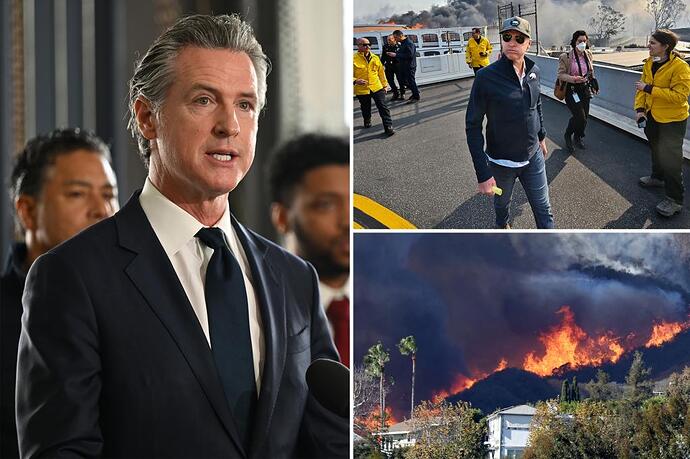
Embattled California Gov. Gavin Newsom reportedly slashed funding earmarked for fighting wildfires by more than $100 million this fiscal year – a move that certainly now has lousy optics with the L…
I don’t know if all that extra money would have mattered, but its absence I’m sure didn’t help.
A reservoir closed for repairs does not equal “California didn’t fill their reservoirs so there was no water in the fire hydrants”
That is precisely what happened. The Santa Ynez reservoir has been closed for repairs for a year, so far, and apparently no plans to fix it and refill it. This happened during California’s fire season. They had historically low amounts of rain yet there was no apparent urgency to fix the reservoir. This is a textbook example of mismanagement.
“Refused to fill reservoirs, to save minnows”
A quick search shows that there’s been a huge controversy about diverting water from farms and cities to the ocean to lower the temperature of river water to benefit the delta smelt. We do not know the reasoning behind not filling the Santa Ynez reservoir but it is certainly plausible that part of the reasoning was the limited amount of water available after providing for the smelt.
obviously they weren’t able to do their job controlling the fire
No, this is not obvious. Just because the fire burned a large territory does not mean that firefighters weren’t able to do their job. They’re still doing it.
A longer term perspective on LA fires, which have been happening roughly every 5 years for the last century.
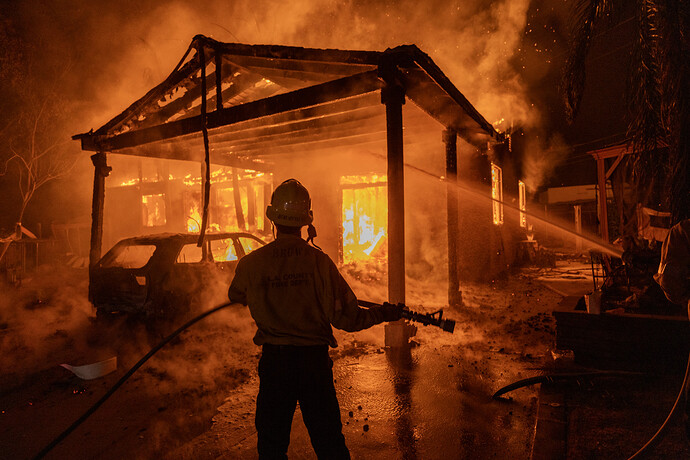
We built a massive civilization in a place where fire is as much a part of the natural habitat as summer rains are in the east.
Twenty-seven years ago, Mike Davis wrote Ecology of Fear: Los Angeles and the Imagination of Disaster . One of the chapters is titled “The Case for Letting Malibu Burn.” In it, he argued that the area between the beach and the Santa Monica Mountains simply never should have been developed. No matter what measures we take to prevent it, those hills are going to burn, and the houses we erect upon them are only so much kindling.
California’s binary wet/dry seasonal cycle means rain in the winter, which feeds the growth of chaparral and sage in the hills and coastal mountains, followed by dry summer heat, which turns that biomass into fuel for wildfires. In Los Angeles, add to that mix the warm Santa Ana winds, which sweep into the basin of the San Fernando Valley and are then channeled into the canyons of the Santa Monica Mountains, reaching hurricane-level velocities in the process. Then add human settlement, and all of the millions of opportunities it presents to produce a spark. The likelihood of a disaster like this happening is, in Davis’s words, “a statistical certainty.”
They didn’t do fire prevention work in LA due to an endangered bush. So then the fires came and burned up all the houses and most of the bushes too.
 New York Post – 14 Jan 25
New York Post – 14 Jan 25
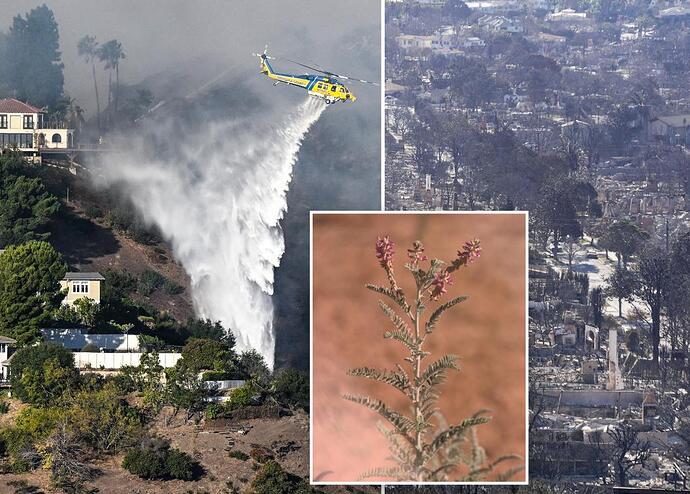
The good news for the milkvetch plant is that they usually need wildfire to sprout — meaning dormant seeds now have a massive new habitat for a new crop of the rare shrub.
We’re from the government and we’re here to help, the CA edition.
Want to sell your burned down property and leave the state as a vote of no confidence? We want you to get a bad price on the way out by limiting competition making it illegal to bid on your property? Gee, thanks for protecting me from “being gouged”, if only you could have done the same with the fire I wouldn’t have needed it.
“The utter clown show currently unfolding in LA under the present-day ‘leadership’ down there is a massive warning sign that putting too many fixed assets in a jurisdiction run by abject imbeciles in the public sector is a recipe for disaster. When push comes to shove, you can’t count on incompetent people like LA Mayor Karen Bass to defend your investment when they can’t get even the basics right”
bump
More climate change
A blowtorch-wielding man subdued by Los Angeles residents in a viral online video is living in the United States unlawfully despite multiple arrests and an assault conviction, federal immigration authorities confirmed. Juan Manuel Sierra, a...
Est. reading time: 2 minutes
 New York Post – 15 Jan 25
New York Post – 15 Jan 25
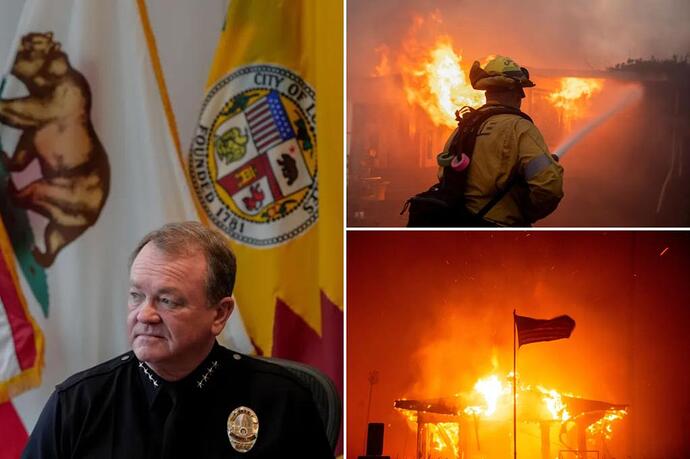
Los Angeles police have arrested four people on arson charges for allegedly trying to ignite new fires as firefighters continue to fight the Palisades and Eaton blazes that have killed a combined 2…
 The Babylon Bee
The Babylon Bee

LOS ANGELES, CA — As the devastation spread and the death toll continued to rise with firefighters working tirelessly to contain the blazes, a suspected arsonist was arrested for allegedly attempting to use a gas blowtorch instead of an electric...
Though meteorologists posted eerily accurate warnings that Santa Ana gusts could fuel a disaster, they’ve had a harder time pinpointing the role of climate change in such events.
Global Warming Climate Change
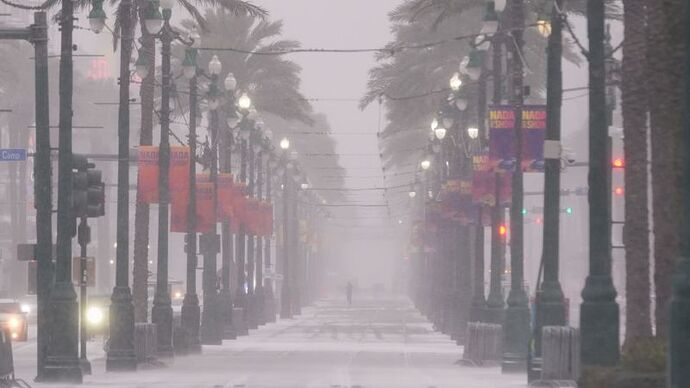
At least nine people are believed to have died as a result of the dangerous cold gripping much of the country, as a once-in-a-generation winter storm wreaks havoc on the Gulf Coast — a region wholly unaccustomed to winter weather.